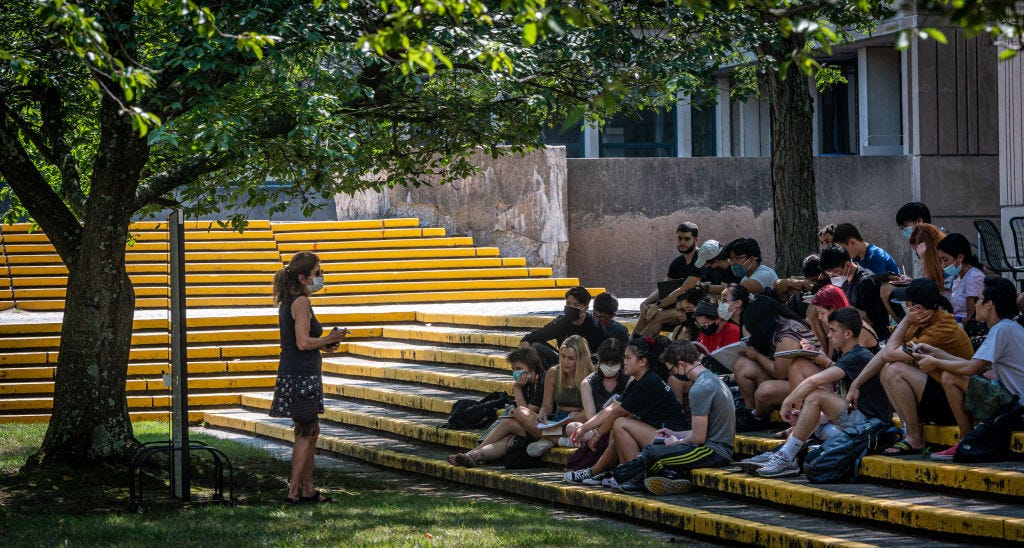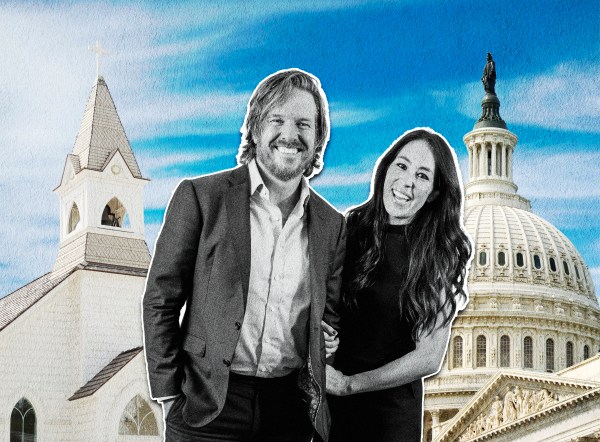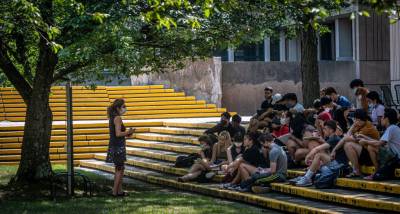I was taking calls around the clock. Zooming with students around the country and in places as varied as Italy and China became the norm, writing emails at 5 a.m. was common, and practically all of my students met my toddler virtually during the first half of 2020 as the COVID-19 pandemic shut down colleges and universities and scattered students through the nation and the world. While trying to keep my students calm, focused, and learning throughout the pandemic was a huge challenge and I regularly changed how we would run my classes to adapt to the realities of being off campus, my students and I were in this together and I had no intention of letting them slip into depression or lose credit. In fact, almost every professor whom I spoke with regularly in the midst of the pandemic had no intention of walking away from our almost sacred obligations to help educate and lift up our students, and we threw ourselves into our roles more deeply than before.
Class times and teaching became so much more than just an investigation of purely academic material; COVID-19 gave me and many others the chance to get to know our student’s families, their hometowns, their local communities and their varied struggles with the shutdowns. I had a window into the very personal and private lives of my students, and I was happy to share mine as well. We became a close community that supported each other throughout the darkest days of the pandemic and despite the losses that many were facing along with great distance and intermediated interactions, I was honored to be able to backstop my students who still managed to thrive, learn, and move their lives forward despite many setbacks.
At the same time, my students repeatedly told me that they felt ignored and abandoned by the school and the many administrators that they hear from on a constant basis, from the dean of students to the many personnel in the Residential Education office. While it may be the case that various individual administrators tried to help, students seemingly felt that they were not being heard or helped while story after story emerged about various professors creating community, from care packages to group Zoom cookie baking. And these stories were not limited to my own school, Sarah Lawrence College; tales of professors stepping up around the country emerged and even though stories of faculty burnout were common, another narrative is warranted now, too: Professors were instrumental in getting their students through the pandemic. A new nationally representative survey from College Pulse of more than 2,000 students demonstrates that during those trying months, students felt far more close to their professors than to the huge cadre of administrators whose sole jobs are to work directly with students to meet their personal needs.
What is particularly notable with this new narrative is that despite colleges making student development and wellness both in and outside the classroom a top priority, the legions of administrators who have been hired and work with students to promote countless initiatives aimed at promoting inclusion, health, and professional, academic, and interpersonal development were not where students really turned in a time of need.
In theory, these ubiquitous administrators have been hired to support students along their college journeys. But new data collected just as schools transition out of pandemic lockdowns reveal that despite such deep messaging to students about the institutional support offered by these administrators, students did not feel these administrators understood them during the pandemic. Instead, the majority of students report that professors were the ones who understand them best.
More specifically, the survey asked the sample of students to think about their own experiences and respond to the question of whether or not certain groups at their respective colleges and universities “see them.” That is, do these respective groups understand the personal challenges (due to race, gender identity, socioeconomic class, childhood experiences, etc.) that students like them face on campus?
When asked about one school’s upper administration—such as the school’s president, provost, deans, and so on—only 17 percent of students strongly agreed that these upper level administrators understood them while another 26 percent said they somewhat believed they were understood by upper administration. In total, just 43 percent—a minority—believed that these administrators understood their needs in some capacity.
It is certainly possible that high-level administrators may be a bit more disconnected from students than the administrators with whom students interact with on the day-to-day. When asked about student-facing administrators and staff—those who regularly interact with students in dormitories and dining halls along with affinity centers and shared commons—the numbers rise a bit. Twenty-two percent of students strongly believe that student services staff members strongly see them and another 34 percent think that they somewhat see them. Although this figure—56 percent—is higher than that of those in higher-level offices, almost half of students still report that their needs and views are not being considered by a group of people often more numerous than the very faculty who teach and train students.
It turns out that the group of people that students believe “see them” the most are not those who are actually tasked to see them. Instead, it is professors who students report being central to their collegiate experiences. More than two-thirds (64 percent) of students report feeling seen by faculty. This is appreciably higher than the number of students who feel understood by the growing class of administrators tasked to work directly with them.
The survey also asked students a more open-ended question and to share which group of university professionals they think understand them, with options ranging from professors to dining hall staff. The majority (60 percent) of students responded that they were best understood by their professors, while 46 percent said their academic advisers and 28 percent said their teaching assistants. Only 19 percent of students said they felt administrators understood them, making it unquestionably apparent that these staff members are not in the hearts and minds of college and university students whatsoever. While some academic advisers may also be administrators, they are often faculty members as well or at least possess a Ph.D., as opposed to the educational or student service master’s degrees that are the norm among most administrators.
What is particularly frustrating in this whole mess for me as professor here is that I have watched colleges’ and universities’ budgets and staff numbers balloon while the ranks of tenured and tenure-track professors decline with adjunct instructors carrying heavy loads. This fairly new trend is totally disheartening, for schools are regularly cutting or consolidating departments around the country, class options decline, and there are fewer full time professors who are actually regulars on campus, while growing numbers of administrators and new support offices seem unending. Yale University made national headlines such as “Yale Now Has More Administrators Than Undergrads Thanks To A Mammoth Bureaucracy” when each Yale undergraduate effectively had a “personal bureaucrat.” At Sarah Lawrence, new administrative positions are announced regularly and are expensive, but in my own department—politics—we still lack a methodologist and a tenure-track role for someone in international relations. My school’s situation is anything but unique, and we now know that despite the upper level’s management belief that these legions of administrators are being appreciated by and engaging with students, it is the professors who are doing so much of the heavy and meaningful lifting.
These data should be of great use to presidents and boards of trustees at schools across the county. There is now strong proof that faculty should be more heavily valued and appreciated as a class of people who care about their students and their educational endeavors. Moreover, it is now clear that the expensive and ever bloating administrators are not fulfilling the roles they purportedly exist to play on their respective campuses. Students are not turning to or connecting with these administrators, a huge class of employees who are often directly responsible for promoting a narrow and progressive view of diversity, identity, and the oppression they believe permeates American society. Administrators have created a toxic and woke environment collegiate environment that suppresses discourse and viewpoint diversity and are not even being approached by and connecting with students. The powers that be at colleges and universities must clean up this administrative mess and help steer higher education toward real dialogue and diversity and accept the fact that it was professors—and not administrators—who helped students manage through the pandemic.
Samuel J. Abrams is professor of politics at Sarah Lawrence College and a nonresident senior fellow at the American Enterprise Institute






Please note that we at The Dispatch hold ourselves, our work, and our commenters to a higher standard than other places on the internet. We welcome comments that foster genuine debate or discussion—including comments critical of us or our work—but responses that include ad hominem attacks on fellow Dispatch members or are intended to stoke fear and anger may be moderated.
With your membership, you only have the ability to comment on The Morning Dispatch articles. Consider upgrading to join the conversation everywhere.